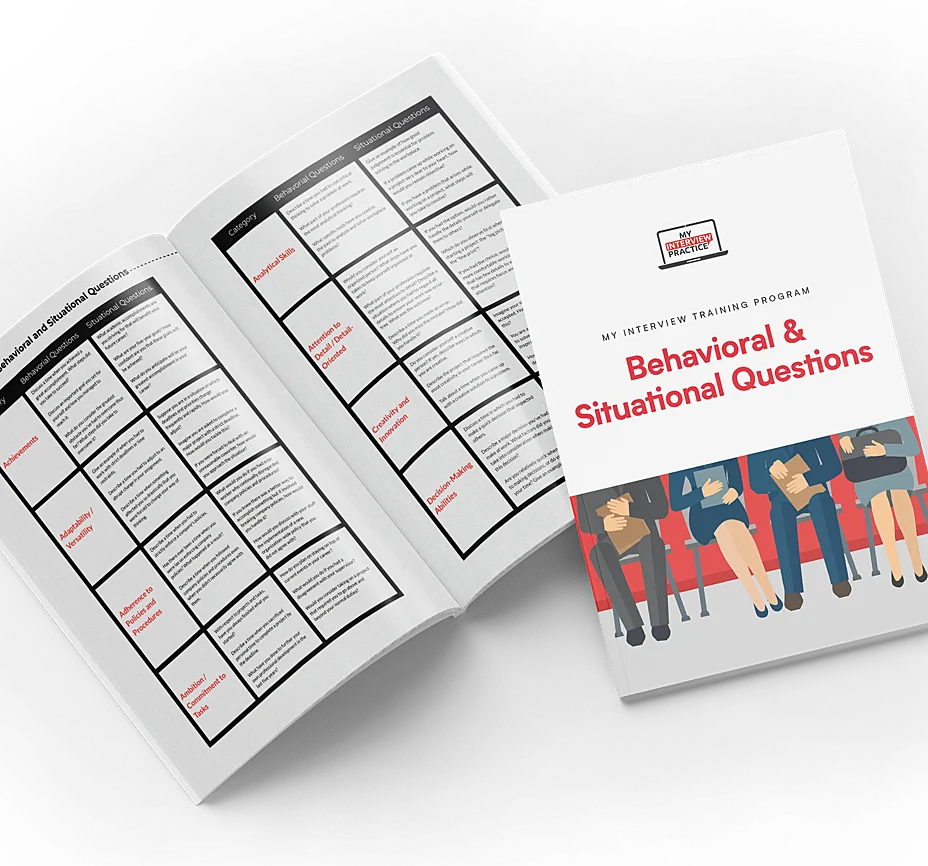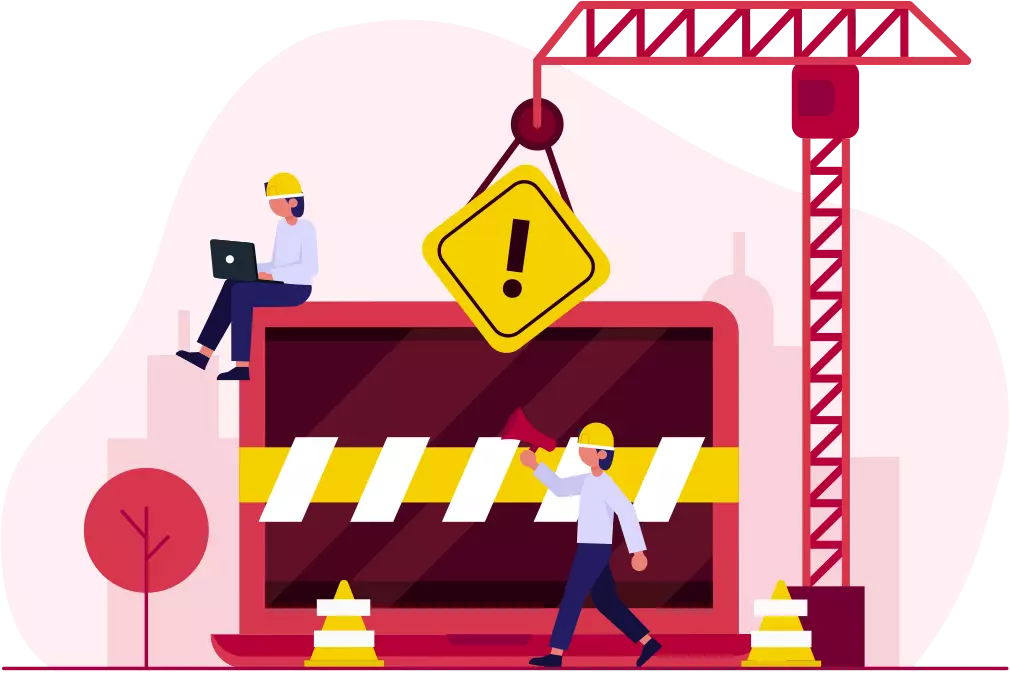 BACK
BACK
QA Tester Interview Questions
Quality Assurance (QA) testers are essential in ensuring software performs flawlessly and meets user expectations. They meticulously test for bugs, usability issues, and performance inconsistencies, contributing to a reliable product that aligns with project goals. To excel as a QA tester, you need a strong foundation in technical skills, problem-solving, and communication, as well as the ability to collaborate with developers and stakeholders.
This guide will help you prepare for your QA tester interview by exploring common questions, explaining why they’re asked, and providing example answers. Whether you're new to QA or looking to advance your career, this resource will help you showcase your skills and confidence during the interview.
QA Tester Interview Questions
1. Can you discuss the differences between quality assurance (QA) and software testing?
Understanding the distinction between QA and software testing is essential because both play different but complementary roles in software development. This question helps the interviewer assess your ability to articulate these differences clearly.
Example Answer
“Quality assurance is a proactive process focused on improving and maintaining the quality of the development process itself. It ensures that proper methodologies and standards are in place, which reduces the chances of defects in the final product. Software testing, on the other hand, is a reactive process that happens after the development phase to identify and fix any defects or bugs.”
2. What are the elements of an effective test strategy?
This question allows you to demonstrate your ability to create comprehensive and thoughtful test strategies, which are essential for ensuring successful testing outcomes.
Example Answer
“An effective test strategy provides a roadmap for the entire testing process and ensures that all aspects of quality are addressed. Key elements include clearly defined objectives, a scope that outlines the specific areas to be tested, a timeline that sets milestones, and the tools and resources required for execution. It also incorporates risk analysis to anticipate challenges and provides test deliverables, such as detailed reports and defect logs.”
3. Can you list some of the different types of software testing procedures?
This question tests your knowledge of various testing methods and your ability to explain how they contribute to ensuring software quality.
Example Answer
“There are several types of software testing procedures, each serving a unique purpose. For example, unit testing focuses on verifying individual components or functions, while integration testing ensures that these components work well together. Functional testing evaluates whether the software meets business requirements, and performance testing measures its responsiveness and scalability under load. Regression testing checks that new changes haven’t negatively impacted existing functionality.”
4. What are the contents of test plans and test cases?
This question evaluates your familiarity with two fundamental documents in the QA process and how they contribute to effective testing.
Example Answer
“A test plan outlines the overall testing approach, including the scope, objectives, timelines, and required resources. It’s essentially a blueprint for how testing will be conducted. On the other hand, test cases are more detailed, describing specific steps for testing individual functionalities, along with expected outcomes and actual results.”
5. What do the terms build and release refer to in the software development and testing process?
This question focuses on key development concepts and helps the interviewer understand your grasp of software lifecycle terminology.
Example Answer
“In the context of software development, a build refers to a compiled version of the application that developers hand over to the testing team for evaluation. It’s like a draft version, which might still have bugs or unfinished features. A release, on the other hand, is a finalized version that has been thoroughly tested and approved for deployment to end users.”
6. What are some of the challenges the software quality assurance team faces while automating the testing process?
This question aims to understand your awareness of the difficulties involved in automation testing and your ability to overcome them.
Example Answer
“Automation testing can present several challenges, such as selecting the right tools, writing maintainable test scripts, and ensuring compatibility across different environments. One significant challenge is the initial time investment required to set up automation frameworks, which can delay immediate testing results. Another issue is maintaining the automation scripts when the application undergoes frequent updates.”
7. Walk me through the steps of a bug cycle.
The interviewer asks this to evaluate your understanding of bug tracking and resolution processes, which are critical for QA testers.
Example Answer
“The bug cycle begins when a tester identifies a defect during testing. First, the bug is documented and assigned to the development team. If the bug is valid, it is given a priority level and moves to the ‘in-progress’ stage for resolution. Once the developer fixes the issue, the bug is returned to the QA team for retesting. If it passes retesting, the bug is marked as ‘closed.’ If not, it’s sent back to the development team.”
8. What is a bug leakage and bug release, and which of them impacts the final product more?
This question tests your ability to differentiate between key QA terms and analyze their significance.
Example Answer
“A bug release occurs when known bugs are intentionally included in the software, usually because they are minor and won’t significantly impact the user experience. Bug leakage, on the other hand, happens when a bug is discovered by the end user after the product has been released. Bug leakage has a far greater impact as it can harm the product’s reputation and user satisfaction.”
9. What is the difference between branch testing and boundary testing?
This question allows the interviewer to assess your knowledge of different testing methodologies and their applications.
Example Answer
“Branch testing involves verifying every possible branch or decision point in the code to ensure all logic paths are executed correctly. It’s typically used to check decision-based conditions in the application. Boundary testing, on the other hand, focuses on testing the limits or edges of input ranges to identify errors at their boundaries.”
10. What is the importance of Agile testing in the context of Agile development methodology?
This question evaluates your familiarity with Agile practices and how QA testing integrates into this popular development framework.
Example Answer
“Agile testing is essential in Agile development because it ensures continuous feedback and quality checks throughout the development lifecycle. Unlike traditional testing, which happens after development is complete, Agile testing occurs iteratively at every sprint. This allows teams to identify and address issues early, reducing the cost and effort of fixing defects.”
11. What are the key components of a test strategy?
Interviewers ask this question to gauge your ability to create a structured and effective testing plan. A clear and comprehensive test strategy ensures the QA process aligns with project goals.
Example Answer
“A strong test strategy includes several critical components: objectives, scope, resources, testing environment, types of testing to be performed, tools and technologies, risks, and a clear timeline."
12. How do you handle conflicting priorities when managing multiple testing projects?
This question explores your ability to manage time and resources effectively, especially when juggling multiple tasks with competing deadlines.
Example Answer
“When managing conflicting priorities, I focus on clear communication, organization, and flexibility. I start by evaluating the criticality and urgency of each project, then create a schedule that allocates time and resources accordingly.”
13. What are the differences between regression testing and retesting?
This question assesses your knowledge of QA testing concepts and your ability to distinguish between two related but distinct processes.
Example Answer
“Regression testing ensures that new code changes haven’t introduced issues in previously functioning parts of the software. It involves testing the entire system after updates. Retesting, on the other hand, focuses on verifying that specific bugs or issues have been fixed.”
14. How do you ensure your test cases are effective and comprehensive?
This question evaluates your ability to write clear and impactful test cases that cover all necessary scenarios for thorough testing.
Example Answer
“To create effective test cases, I start by understanding the software requirements and user expectations. I then break down each feature into testable components and write test cases that include both positive and negative scenarios. I also ensure my test cases are clear, concise, and easy to execute. Regular reviews with stakeholders and team members help ensure completeness and alignment with project goals.”

The Smarter Way to Prepare
Experience a smarter way to prepare with our interview simulator.
15. What would you do if you discovered a critical bug shortly before a product release?
This behavioral question evaluates how you handle high-pressure situations and your ability to make decisions that balance quality and deadlines.
Example Answer
“If I discovered a critical bug just before release, I’d immediately communicate the issue to the project team and stakeholders, providing details about its severity and potential impact. I’d then propose potential solutions, such as delaying the release, issuing a hotfix post-launch, or finding a workaround depending on the situation.”
16. How do you decide when to automate a test case versus performing it manually?
Automation is a key aspect of QA testing, but it’s not always the right solution for every test case. Interviewers ask this to understand how you evaluate which tests are best suited for automation and which require manual intervention to ensure efficient and thorough testing.
Example Answer
“When deciding whether to automate a test case, I consider factors like repetition, complexity, and the likelihood of human error. Test cases that are repetitive, require extensive data input, or need to be run across multiple environments are strong candidates for automation. On the other hand, exploratory and usability tests are better suited for manual execution to assess user behavior and interface quality.”
17. What steps do you follow when documenting a bug?
Effective bug documentation is essential for streamlining communication between QA and development teams. This question helps interviewers gauge your ability to create clear, actionable reports that developers can use to identify and resolve issues quickly.
Example Answer
“When documenting a bug, I include a clear title, a detailed description, steps to reproduce the issue, the expected and actual outcomes, relevant screenshots or videos, and any additional environmental details like browser or device type.”
18. Can you explain the role of risk-based testing in QA?
Risk-based testing helps teams focus their efforts on areas of the software that have the highest potential for defects. Interviewers want to know if you can effectively prioritize testing tasks based on impact and likelihood of failure.
Example Answer
“Risk-based testing focuses on identifying and prioritizing the areas of software most likely to fail or have the greatest impact if they do. This helps optimize testing resources by concentrating on high-risk features first.”
19. How do you ensure cross-browser compatibility during testing?
Ensuring cross-browser compatibility is critical for delivering a consistent user experience across all platforms. This question explores your methods for testing and resolving browser-specific issues to achieve this goal.
Example Answer
“To ensure cross-browser compatibility, I use tools like BrowserStack or Sauce Labs to test the software across different browsers, operating systems, and devices. I create a matrix of supported browsers and systematically test core functionalities in each.”
20. What’s your process for handling incomplete or unclear software requirements?
Incomplete requirements are a common challenge in QA testing, and interviewers ask this question to understand how you approach ambiguity. Your ability to collaborate with stakeholders and adapt your testing process is critical in these situations.
Example Answer
“When encountering incomplete or unclear requirements, I first seek clarification by engaging with stakeholders, such as product managers or developers, to better understand the project’s goals. If clarity cannot be achieved immediately, I identify the most critical features and focus my testing efforts on those.”
A word of warning when using question lists.
Question lists offer a convenient way to start practicing for your interview. Unfortunately, they do little to recreate actual interview pressure. In a real interview you’ll never know what’s coming, and that’s what makes interviews so stressful.
Go beyond question lists using interview simulators.
With interview simulators, you can take realistic mock interviews on your own, from anywhere.
My Interview Practice offers a dynamic simulator that generates unique questions every time you practice, ensuring you're always prepared for the unexpected. Our AI-powered system can create tailored interviews for any job title or position. Simply upload your resume and a job description, and you'll receive custom-curated questions relevant to your specific role and industry. Each question is crafted based on real-world professional insights, providing an authentic interview experience. Practice as many times as you need to build your confidence and ace your next interview.
| List of Questions |
In-Person Mock Interview |
My Interview Practice Simulator |
|
|---|---|---|---|
| Questions Unknown Like Real Interviews | |||
| Curated Questions Chosen Just for You | |||
| No Research Required | |||
| Share Your Practice Interview | |||
| Do It Yourself | |||
| Go At Your Own Pace | |||
| Approachable |
The My Interview Practice simulator uses video to record your interview, so you feel pressure while practicing, and can see exactly how you came across after you’re done. You can even share your recorded responses with anyone to get valuable feedback.
Check out My Interview Practice
Positions you may be interested in
Get the free training guide.
See the most common questions in every category assessed by employers and be ready for anything.
Get the Guide


